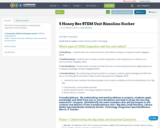
This Unit is Transdisciplinary reinforcing the importance of the honeybee.
- Subject:
- Applied Science
- Environmental Science
- Life Science
- Mathematics
- Material Type:
- Activity/Lab
- Date Added:
- 03/06/2019

This Unit is Transdisciplinary reinforcing the importance of the honeybee.
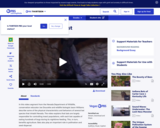
This video segment from the Nevada Department of Wildlife looks at various species of bats and how they impact the environment.
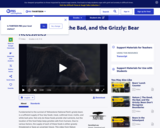
This Nature video segment focuses on the four foods most important to the grizzly bears' survival, and it describes the threats to the supply of each of them.

In this video segment from Nature, learn about the problems bears are creating on ranch land surrounding Yellowstone National Park.

This Nature video segment explores how the relationship between humans and grizzly bears has changed over the course of American History, and it describes the closing of the Yellowstone National Park garbage dumps in the 1970s.
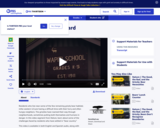
Learn about the precautions humans must take in the face of a growing grizzly bear population in this video from Nature.
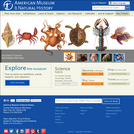
This Ology game site contains rules and a board for a board game dealing with extinction, particularly the modern biodiversity crisis. The players need to read endangered species facts from the board to answer questions on the spaces that they land in so that they can progress. Users can follow links to what to do and materials needed for the game.

After a butterfly species disappeared from a location where it had been found for many years, conservation professionals accessed climate projections to identify potential habitat for its recovery.

In this jigsaw, students will graph various Bald Eagle population numbers and determine the impact humans have had on the eagle. Specifically, they will investigate why the Bald Eagle was listed as endangered, the affects of DDT on eagles, and the affects of lead. Based on an original activity titled "Bald Eagle Population Graphing" from The Raptor Center, University of Minnesota http://www.cvm.umn.edu/raptor/prod/groups/cvm/@pub/@cvm/documents/asset/cvm_66866.pdf
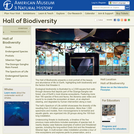
Just like the permanent exhibit it was created to complement, the online Hall of Biodiversity showcases the beauty, diversity, and abundance of life on Earth while warning of the threats posed by human activity. Along with a brief introduction to the exhibit, it includes these four sections: Spectrum of Life - A virtual journey through 3.5 billion years of evolution on Earth. The interactive cladogram includes detailed information on more than 25 diverse life forms. Transformation of the Biosphere - An overview of how the Earth is continually experiencing climatic changes and changes brought on by physical events, such as meteorite collisions. The Dzanga-Sangha Rain Forest - An explanation of what visitors will find when they explore this walk-through diorama at the Museum, which features the sights and sounds of a dense tropical rain forest. Solutions - A list of concrete actions individuals can take to help save the Earth's resources for generations to come.
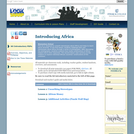
Introducing Africa is comprised of two lessons and is designed to raise studentsĚ_Ě_´ awareness about stereotypes of Africa; teach them information about the history, geography, economics and cultures of Africa; and to give them an appreciation for the diversity of the African continent. This kit will teach students to identify important details, make logical inferences, and draw informed conclusions from visual documents including photographs and money. The lesson was designed for third grade but can be used with older students.
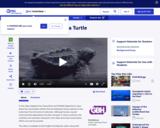
This video adapted from Texas Parks and Wildlife Department describes how humans are helping restore safe nesting grounds for the critically endangered Kemp's ridley sea turtle to ensure its successful repopulation.
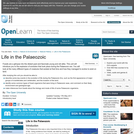
Fossils are a glimpse into the distant past and fascinate young and old alike. This unit will introduce you to the explosion of evolution that took place during the Palaeozoic era. You will look at the many different types of creatures that existed at that time and how they managed to evolve to exist on land.

This kit covers a historical overview of American representations of endangered species from the slaughter of the American buffalo to Palm plantations in Sumatra. It compares conflicting constructions about human/animal relations, rainforest biodiversity, the Northern Rockies gray wolf, frogs and Atrazine. Students decode how the relationship of animals and humans has been portrayed and passed on from generation to generation.

This resource is a video abstract of a research paper created by Research Square on behalf of its authors. It provides a synopsis that's easy to understand, and can be used to introduce the topics it covers to students, researchers, and the general public. The video's transcript is also provided in full, with a portion provided below for preview:
"The koala is an iconic Australian species. Unfortunately, some wild populations are at risk of extinction. Captive breeding programs aiming to manage endangered populations face high mortality rates of pouch-dwelling koala young. Recently, researchers investigated infant koala mortality rates associated with bacterial infection by analyzing the microbiome of koala pouches. Gene sequencing showed that the pouch microbiomes of successfully bred female koalas were dominated by Muribaculaceae bacteria early in lactation, while mother koalas who lost their young had Enterobacteriaceae-dominated pouch microbiomes. The bacterial species associated with poor reproductive outcomes were shown to be resistant to antibiotics commonly administered to captive koalas. This work could help reduce mortality rates of infant koalas in captive breeding programs, assess medication regimens used to treat captive koalas, and support general studies of at-risk wild koala populations..."
The rest of the transcript, along with a link to the research itself, is available on the resource itself.
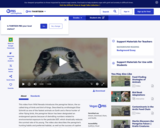
In this video from Outdoor Nevada, Brian Wignall speaks with an ornithologist about the peregrine falcon, a majestic and endangered species that is one of the fastest animals in the world.
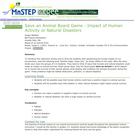
This student activity engages the students' thinking by listening to a story, brainstorming ideas in small groups about how human activity or natural disasters could possibly impact an animal's environment, and then reinforcing that thinking using a board game called Save an Animal.
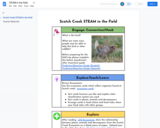
Taking students into the field to conduct authentic science brings science to life. This document shares resources used to facilitate a field experience for 5th grade students both in the classroom and out in the field around a Washington State listed endangered species, the sharp-tailed grouse. The field event took place at the Scotch Creek Wildlife Area near Conconully, WA but the resource can be used and adapted for other locations and other focus species. This resource can be a guide in developing your own STEAM in the field experience for students.
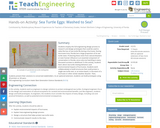
Students employ the full engineering design process to research and design prototypes that could be used to solve the loss of sea turtle life during a hurricane. During Hurricane Irma, Florida lost a large proportion of its sea turtle nests. Protecting these nests from natural disasters or even human influence is an essential component of conservation in Florida, since only one hatchling in every thousand survives to adulthood. In this activity, students learn about sea turtle nesting behaviors and environmental impacts of hurricanes. Students work collaboratively to build structures that could protect a single sea turtle nest, or an entire beach, in the event of a hurricane or other similar weather disaster. Then, students present their solutions to concerned stakeholders. As an optional extension, students can build prototypes using 3D printers or 3D pens.
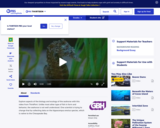
This video from Thinkport introduces the seahorse, an unusual, endangered fish that has puzzled scientists who are attempting to save it.